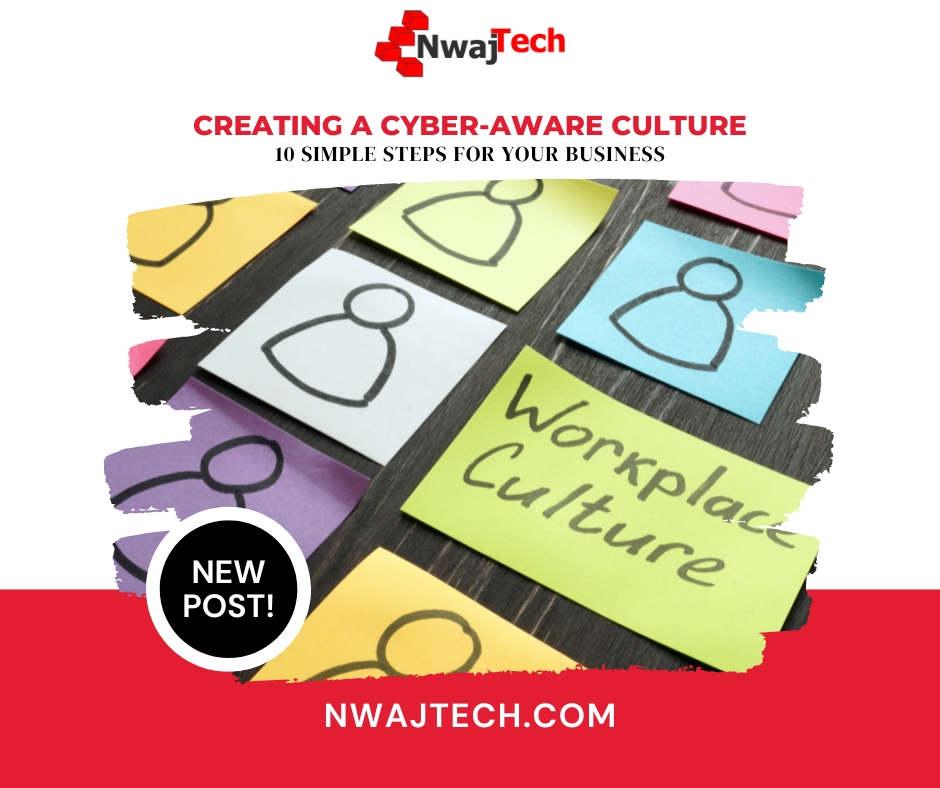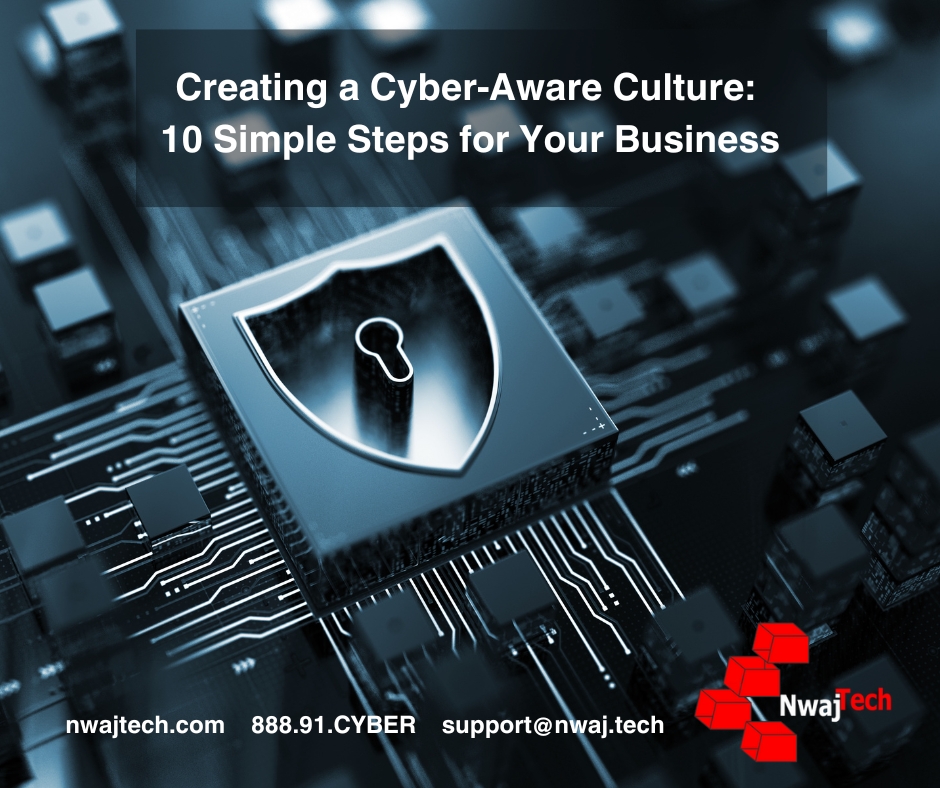
Creating a Cyber-Aware Culture: 10 Simple Steps for Your Business
In today’s digital age, cyberattacks like phishing, malware, and data breaches pose constant threats to businesses. Often, these threats gain entry through employee mistakes, which stem from a lack of cybersecurity awareness. Alarming statistics show that 95% of data breaches result from human error. The bright side? These errors are preventable. By building a robust culture of cyber awareness, you can significantly lower your risk.
With the recent wave of cybersecurity breaches and outages, it’s more important than ever to implement a culture of cyber awareness in your business.
The Importance of Cyber Awareness
Imagine your organization’s cybersecurity as a chain. Strong links make it resilient, while weak links make it susceptible to attacks. Employees form these links. Cultivating a culture of cyber awareness transforms each employee into a strong link, fortifying your entire organization.
Practical Steps for Building Cyber Awareness
Creating a cyber-aware culture doesn’t require elaborate strategies or costly training programs. Here are 10 practical steps to make a substantial impact.
1. Secure Leadership Support
Cybersecurity shouldn’t rest solely on the IT department’s shoulders. Engage leadership! When executives advocate for cyber awareness, it sends a compelling message across the organization. Leaders can demonstrate their commitment by:
- Joining training sessions
- Speaking at security awareness events
- Allocating resources for ongoing initiatives
2. Make Training Engaging
Cybersecurity training doesn’t have to be tedious. Use engaging tools like videos, gamified quizzes, and real-life scenarios to maintain employee interest. Consider interactive modules that guide employees through simulated phishing attacks or short animated videos that explain complex security concepts in a simple and relatable manner.
3. Use Clear Communication
Avoid confusing cybersecurity jargon. Communicate in plain language and focus on practical advice employees can use daily. For example, instead of saying “implement multi-factor authentication,” explain that it means adding an extra layer of security when logging in, similar to needing a code from your phone along with your password.
4. Offer Bite-Sized Training
Lengthy training sessions can overwhelm employees. Opt for bite-sized training modules that are easy to digest and remember. Use microlearning approaches, delivering short bursts of information throughout the workday to keep employees engaged and reinforce key security concepts.
 5. Conduct Regular Phishing Drills
5. Conduct Regular Phishing Drills
Test employee awareness and preparedness with regular phishing drills. Send simulated phishing emails and track responses. Use the results to educate employees on identifying red flags and reporting suspicious messages. After a drill, dissect the email with employees to highlight the signs of a phishing attempt.
6. Encourage Reporting
Make it easy and safe for employees to report suspicious activity without fear of blame. Establish a straightforward reporting system and acknowledge reports promptly. Options include:
- A dedicated email address
- An anonymous reporting hotline
- A designated security champion employees can approach directly
7. Empower Security Champions
Identify enthusiastic employees to become “security champions.” These champions can answer peer questions and promote best practices through internal communication channels, keeping security awareness at the forefront. They foster a sense of shared responsibility for cybersecurity within the organization.
8. Extend Cybersecurity Beyond Work
Cybersecurity isn’t just a workplace concern. Educate employees on protecting themselves at home, too. Share tips on creating strong passwords, securing Wi-Fi connections, and avoiding public hotspots. Employees who practice good security habits at home are likely to continue these practices at work.
9. Celebrate Achievements
Recognize and celebrate employee achievements in cyber awareness. Did someone report a suspicious email? Did a team achieve a low click-through rate on a phishing drill? Publicly acknowledge their contributions to maintain high motivation. Recognition reinforces positive behavior and encourages ongoing vigilance.
10. Utilize Technology
Leverage technology to build a cyber-aware culture. Use online training platforms that deliver microlearning modules and track employee progress. Schedule automated phishing simulations to keep employees on their toes. Tools that enhance employee security include:
- Password managers
- Email filtering for spam and phishing
- Automated rules like Microsoft’s Sensitivity Labels
- DNS filtering
Conclusion: Cybersecurity is a Collective Effort
Building a culture of cyber awareness is an ongoing process. Regularly revisit these steps and keep the conversation alive. Integrate security awareness into your organization’s DNA. Cybersecurity is a shared responsibility. By fostering a culture of cyber awareness, your business gains immensely. Equip everyone in your organization with the knowledge and tools to stay safe online. Empowered employees become your strongest defense against cyber threats.
Reach Out to Nwaj Tech for Security Training & Solutions
Need assistance with email filtering or setting up security protocols? Looking for ongoing employee security training? At Nwaj Tech, we can help reduce your cybersecurity risk in numerous ways. Contact us today to learn more.
